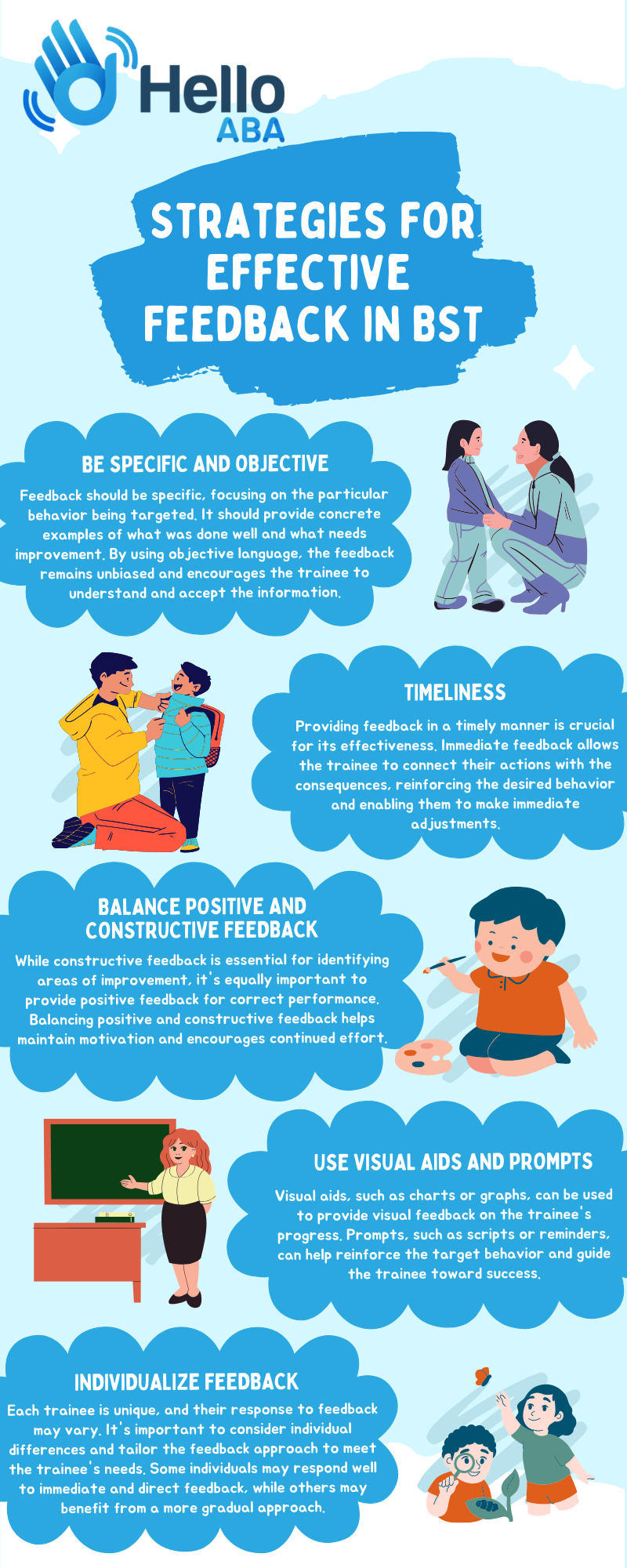Applied Behavior Analysis (ABA) is a widely recognized and effective approach for individuals with autism spectrum disorder (ASD). A core component of ABA therapy is modeling, a technique that involves demonstrating desired behaviors to teach new skills or improve existing ones.
By observing and imitating these modeled behaviors, individuals can learn to perform tasks independently and effectively. This article will explore the principles of modeling, provide practical examples, and offer guidance on implementing this technique in various ABA programs.

Modeling in Autism Interventions
When it comes to autism interventions, modeling plays a crucial role in promoting desired behaviors. It involves demonstrating the targeted behavior to the individual with autism, providing them with a visual example of how the behavior should be performed. This technique can be implemented by the trainer or through videos.
The Role of Modeling
By observing others engaging in the desired behavior, individuals with autism can better understand how to perform the behavior themselves. Modeling provides a clear and concrete visual representation, helping individuals with autism grasp the concepts and steps involved in the behavior.
One advantage of modeling is that it allows individuals with autism to learn from both trained professionals and peers. For instance, video modeling and peer modeling have been proven effective in teaching play skills. Individuals with autism can learn how to engage in play activities effectively.

Implementing Modeling Techniques
To implement modeling techniques effectively, it is important to consider a few key factors. First, it is crucial to match the complexity of the behavior being modeled to the individual’s current skill level. Starting with simpler behaviors can help individuals with autism build their skills step by step.
In addition to modeling, other strategies such as prompting, reinforcement, behavior-specific praise, and social narratives can be combined to enhance the effectiveness of the intervention. Prompting can be used along with modeling to guide the individual through the behavior.
Moreover, it’s important to note that modeling is most effective when combined with other teaching methodologies. For example, utilizing scripts and activity schedules alongside modeling has shown success in teaching sociodramatic play skills to children with and without disabilities.
Rehearsal in Behavioral Skills Training
In addition to modeling, rehearsal plays a vital role in Behavioral Skills Training (BST) as it provides individuals with autism the opportunity to reinforce newly acquired skills. Through rehearsal, individuals can apply the learned behaviors in a controlled environment, allowing them to gain confidence and proficiency.
Importance of Rehearsal
Rehearsal is an essential component of BST as it allows individuals with autism to transfer the skills they have learned into real-life situations. It provides the opportunity for repeated practice, which is crucial for skill mastery. By engaging in rehearsal, individuals can refine their abilities and enhance their overall performance.
Studies have shown that rehearsal, particularly through role-play situations, is effective in teaching various skills. It allows individuals to simulate real-life scenarios, enabling them to practice newly acquired behaviors in a safe setting. This practice strengthens their understanding and execution of the targeted behaviors.
Practical Application of Rehearsal
During the rehearsal phase of BST, individuals with autism are encouraged to actively participate by engaging in role-play activities. Trainers, caregivers, or peers can serve as partners in these practice sessions. The use of scripts and prompts can be helpful in guiding individuals through the rehearsal process.
Rehearsal, when combined with prompting, has shown effectiveness in teaching play skills to individuals with autism. For example, using scripts and visual cues can assist individuals in executing sociodramatic play skills. Prompting can gradually be faded over time as individuals gain independence.

Providing Feedback in BST
Feedback plays a vital role in BST. In the context of BST, feedback refers to the information given to the trainee about their performance, highlighting areas of strength and areas that need improvement. Effective feedback is essential for maximizing the effectiveness of the intervention and promoting skill acquisition.
Significance of Feedback
Feedback helps the trainee understand how well they are performing the target behavior. Constructive feedback provides information about what was done correctly and what aspects need improvement. This understanding allows the trainee to make adjustments and strive for better outcomes.
Feedback also serves as a motivator. Positive reinforcement for accurately performing the target behavior motivates people to keep improving their abilities and validates their efforts. Constructive criticism, on the other hand, offers suggestions for improvement and keeps people motivated.
Strategies for Effective Feedback in BST
To ensure that feedback is effective and facilitates skill acquisition, there are several strategies that trainers can employ:

Tailoring BST for Individuals
BST, after all, is a versatile approach that can be adapted to suit different scenarios and individual needs. It allows for flexibility in selecting appropriate skills to target and determining the best strategies for teaching those skills. Customization involves considering factors such as developmental level, interests, and challenges.
By customizing interventions, practitioners can ensure that the teaching methods used are meaningful for the individual with autism. This personalization fosters a positive learning environment and enhances the effectiveness of the intervention. It also allows for the incorporation of individual preferences and strengths.
Evaluating the effectiveness of interventions is another crucial step in the BST process. It allows practitioners to assess whether the intervention is producing the desired results and to make any necessary adjustments. Evaluation involves collecting data and monitoring progress to determine the effectiveness of the intervention.
Measuring the effectiveness of BST can be done through various methods, such as direct observation, data collection, and standardized assessments. These tools provide valuable information about the individual’s progress, allowing practitioners to track skill acquisition and identify areas that may require further attention.
If you’re seeking top-notch ABA therapy in Maryland, don’t hesitate to contact Hello ABA today! Our experienced team is dedicated to providing personalized care and achieving remarkable outcomes for children with autism! We understand that every child is unique, and we tailor our ABA programs to meet their individual needs and goals.






